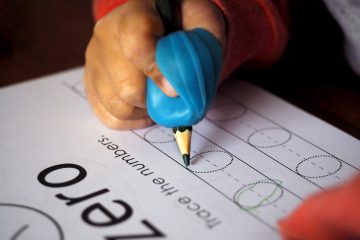Parents who are keen on honing their child’s reading skills should consider adding one new activity into their routine: drawing. A report presented at the International Conference on new Horizons in Education showed that drawing improved reading abilities and increased powers of observation. Researchers concluded that art may have far greater importance than it is given. As noted by Horn and Giacobbe, for little ones, “drawing is writing.” It essentially prompts kids to do what adult writers do: generate ideas, rely on their memory, observe, and record the wonder of the world around them.

Studies on Drawing and Literacy
The above report summarized the results from three studies that looked into the connection between drawing, writing, and literacy. The studies showed that children who took part in drawing projects developed greater concentration (a quality that is vital for reading) and honed their ability to ‘notice’ things. For instance, they developed an enhanced ability to take note of specific letters and punctuation marks. The teachers in one kindergarten class reported a 100% achievement of district reading goals, noting that children paid greater attention to punctuation when reading. They also developed fine motor skills and felt more secure about trying out new tasks.
Creating a Calm Environment
One of the most important ways that drawing can boost reading skills is by creating a calm, ‘in the zone’ ambience, both at home and in the classroom. Because drawing is not rushed and there are no objective ways to judge a ‘pass’ or ‘fail’ at drawing, kids feel freer to express themselves through color and choice of subject. In the studies, the children kept all their work in portfolios and were as such unable to compare their own work with that of other children. This enabled them to work freely, without a spirit of competition or comparison. While drawing, the silence and inward focus of the task instills a mindful state – one which promotes a sense of peace that can help reduce the stress associated with other tasks, including reading.
Where to Start?
Parents wishing to include drawing in their daily or weekly tasks with children can begin with simply finger painting, abstract art, etc. As kids mature and are ready to take on figurative work, they can attempt simple natural subjects such as birds, plants, and flowers. Animals like owls are easy to draw, as are dogs, cats, and fish. These simple techniques will help kids understand proportion. As their skills deepen, children can then tackle more complex shapes, and begin to use techniques like shading and 3D perspectives.
How Long Should a Drawing Session Take?
Drawing sessions can last between 45 minutes and an hour, more or less, though younger children may grow tired of this activity after around half an hour. Take it easy, slowly giving kids more complex tasks so they slowly increase the amount of time they are drawing. To keep kids interested, choosing the right subjects is key. If kids are inspired by cartoon characters, look for simple drawings they can emulate.
Because drawing has positive effects on children’s reading, writing, and self-confidence, it should definitely be a part of their weekly activities. Even if parents aren’t natural born artists, simple guides can help them and their children develop a love for drawing. Art is a matter of subjective appreciation, which is one of the best reasons for encouraging a love for creation in children. Arguably, art is the one subject in which ‘good’ and ‘bad’ don’t apply. Every work is a valid and beautiful expression, and as such worthy of praise.
Contributed by freelance writer Jocelyn Brown


